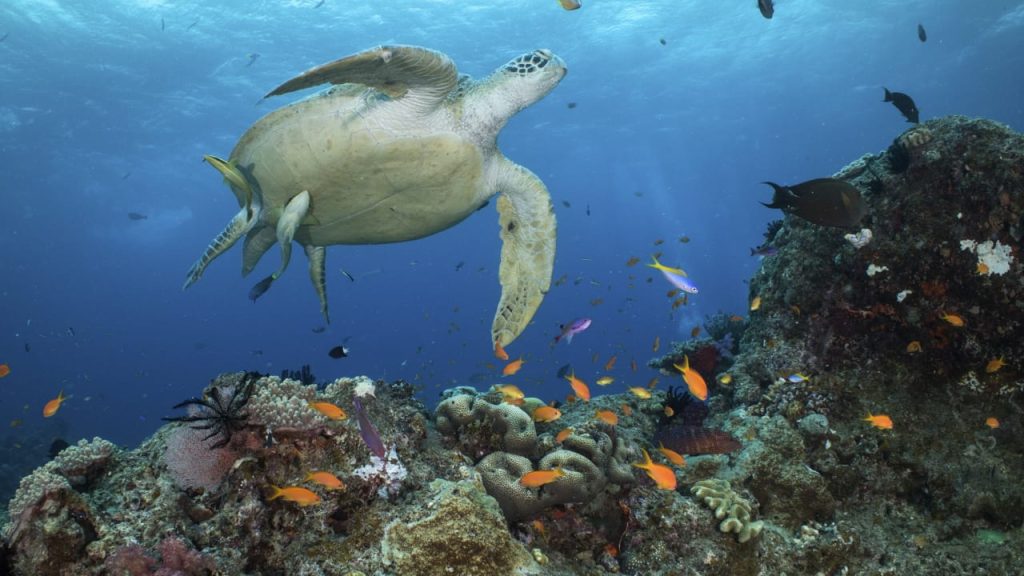Great Barrier Reef in Australia |
Coral reefs are recovering, but…
A glimmer of hope on the world’s largest coral reef?
Some parts of Australia’s Great Barrier Reef are recovering from damage faster than expected. That comes from the Australian Institute of Oceanography report, released by the government on Thursday. However, experts caution against being overly optimistic.
︎ In the northern part of the UNESCO World Heritage site, coral growth increased last year to an extent not seen since the start of the monitoring program 36 years ago. The fast-growing hard coral species Acropora is responsible for this positive development.
︎ BUT: The further south the team from the Institute of Marine Sciences moved, the worse the condition of the reefs got. In the center there were much fewer new corals, even in the south the vegetation cover decreased.
“During periods when there are no serious disturbances, corals can still recover,” said Marine Science Institute president Paul Hardesty. However, he does not see this as a trend reversal. Because: Hurricanes, new coral bleaching, and frequent coral-eating crown-of-thorns starfish can quickly wipe out successes.
Above all, Hardesty said, the condition in the southern part of the more than 2,300-kilometer-long reef shows “the extent to which the reefs are subject to acute and severe disturbance.” These “become more frequent and last longer.” A year ago, the southern part seemed to be still recovering.
Corals are creatures whose limestone skeletons provide habitats for many other animals and plants. The Great Barrier Reef is made up of about 2,500 different reefs and more than 900 islands. About 1,500 species of fish and 4,000 species of mollusks can be found there.
Because the oceans are warming, the world’s largest coral reefs have suffered from frequent “bleaching” for decades. The corals then come under pressure and shed the colorful algae that live inside them. While bleached corals are still alive and able to recover, their mortality rate increases when they become bleached.
Many experts fear that coral reefs could be completely destroyed due to the increased recurring damage. Accordingly, they view the new report with suspicion.
Marine scientist Terry Hughes called it “good news” that coral reefs are growing again. But the species responsible for recovery are highly vulnerable to rising ocean temperatures. Hughes believes it will be difficult to replace the large, old, slow-growing reefs that made the reef a natural paradise.
“This recovery trend is being driven by a handful of Acropora species,” Curtin University coral researcher Zoe Richards cautions against overconfidence. But the next heat wave could wipe out coral reefs again. There is already evidence that any “mass bleaching leads to the local extinction of rare species”. These “hidden losses in biodiversity” are only obliterated by the “short-term success of a handful of fast-growing coral species”.

“Total coffee aficionado. Travel buff. Music ninja. Bacon nerd. Beeraholic.”







More Stories
Researchers detect extremely high-energy gamma rays
Anxiety disorders in old age increase the risk of dementia
Researchers are particularly fascinated by these exoplanets.